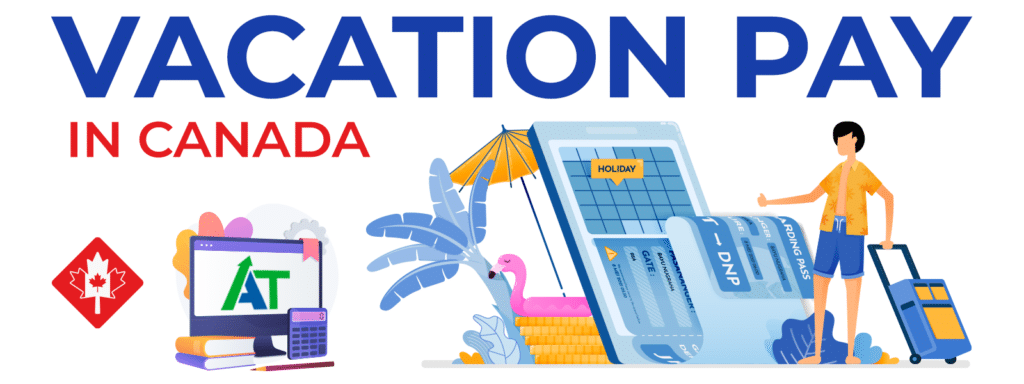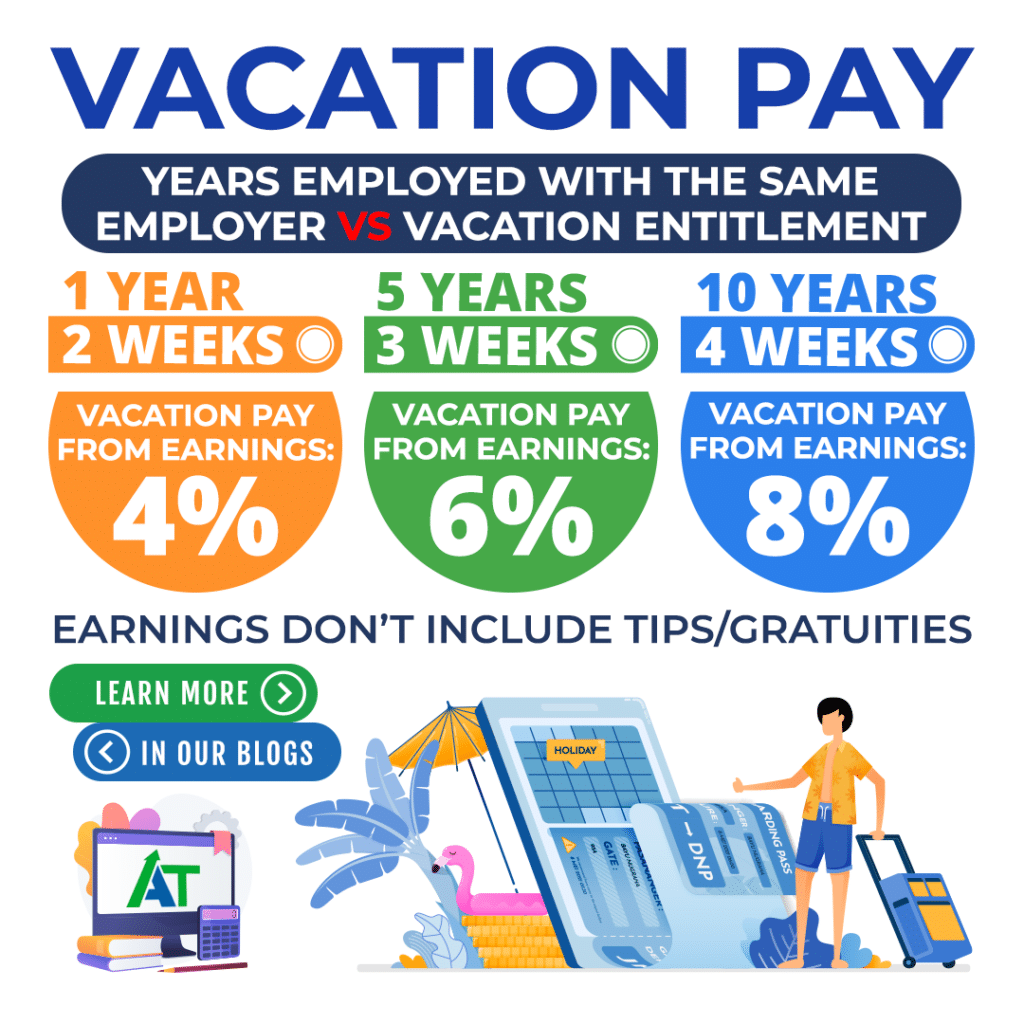
Vacation Pay and Entitlement Per the Canada Labour Code
Federally regulated employees in Canada have standards that are described in the Canada Labour Code. It sets minimum standards for employers to follow involving annual vacation entitlement, vacation pay, and general holidays.
If your collective employment agreement or other work arrangement has rights that are equal to or better than the Canada Labour Code, there is a provision for third party settlements of disputes.
Annual Vacation Entitlement
Federally regulated employees are entitled to a set number of weeks of vacation upon completion of years of continuous employment with the same employer. The entitlements are:
- Minimum of 2 Weeks Vacation for 1 Year of Continuous Employment with the Same Employer
- A Minimum of 3 Weeks Vacation for 5 Years of Continuous Employment with the Same Employer
- At least 4 Weeks Vacation for 10 Years of Continuous Employment with the Same Employer
One year of employment refers to a continuous period of employment for the same employer. This definition includes:
- 12 consecutive months that begin with the date that your employer hired you.
- A period of 12 consecutive months beginning on any anniversary of the date you were hired.
- A calendar year or another period of 12 consecutive months that your employer determines according to the Canada Labour Standards Regulations.
To be entitled to any period of vacation, a year of employment must be completed. Your vacation pay is determined by the wages earned during the year of employment. Choosing the timing of an annual vacation must be either mutually agreed upon with your employer or is set by them.
Your vacation needs to begin before the end of 10 months after completing each year of employment. If the vacation period is chosen by your employer, 2 weeks notice must be given of when it will start.
Annual Vacation Pay
Vacation pay can be paid up to 14 days before the start of your vacation. It can also be paid during or immediately after your vacation. To calculate your annual vacation pay, a percentage is taken from your gross wages earned during a year of employment.
| Years of Employment with the Same Employer | Entitled Weeks of Vacation | Vacation Pay % of Earnings |
| 1 Year | 2 Weeks | 4% of Earnings |
| 5 Years | 3 Weeks | 6% of Earnings |
| 10 Years | 4 Weeks | 8% of Earnings |
Wages or earnings include every form of payment for the work you performed. This does not include tips and other gratuities. Employees can waive, postpone, or split vacation for a specified year of employment as long as there is a written agreement with your employer.
When on leave with pay, your employment status doesn’t change and you still accumulate benefits. This includes vacation pay and time during the leave period. If the leave is without pay, your seniority will continue to grow but vacation pay will only be calculated on wages earned during the year of employment. This leave of absence will not affect the date you become eligible for additional weeks of vacation or increases in vacation pay.
If your employment ends, your employer must pay out any vacation pay owed based on any completed years of employment. Learn more by visiting the CRA’s page on Annual Vacations and General Holidays for Federally Regulated Employees here.

